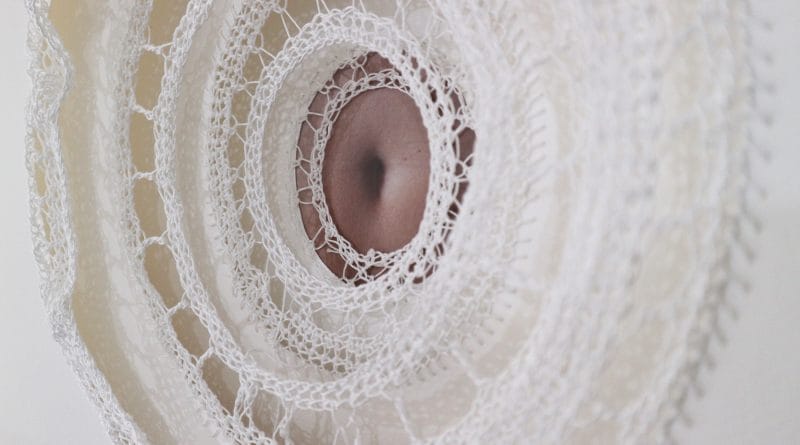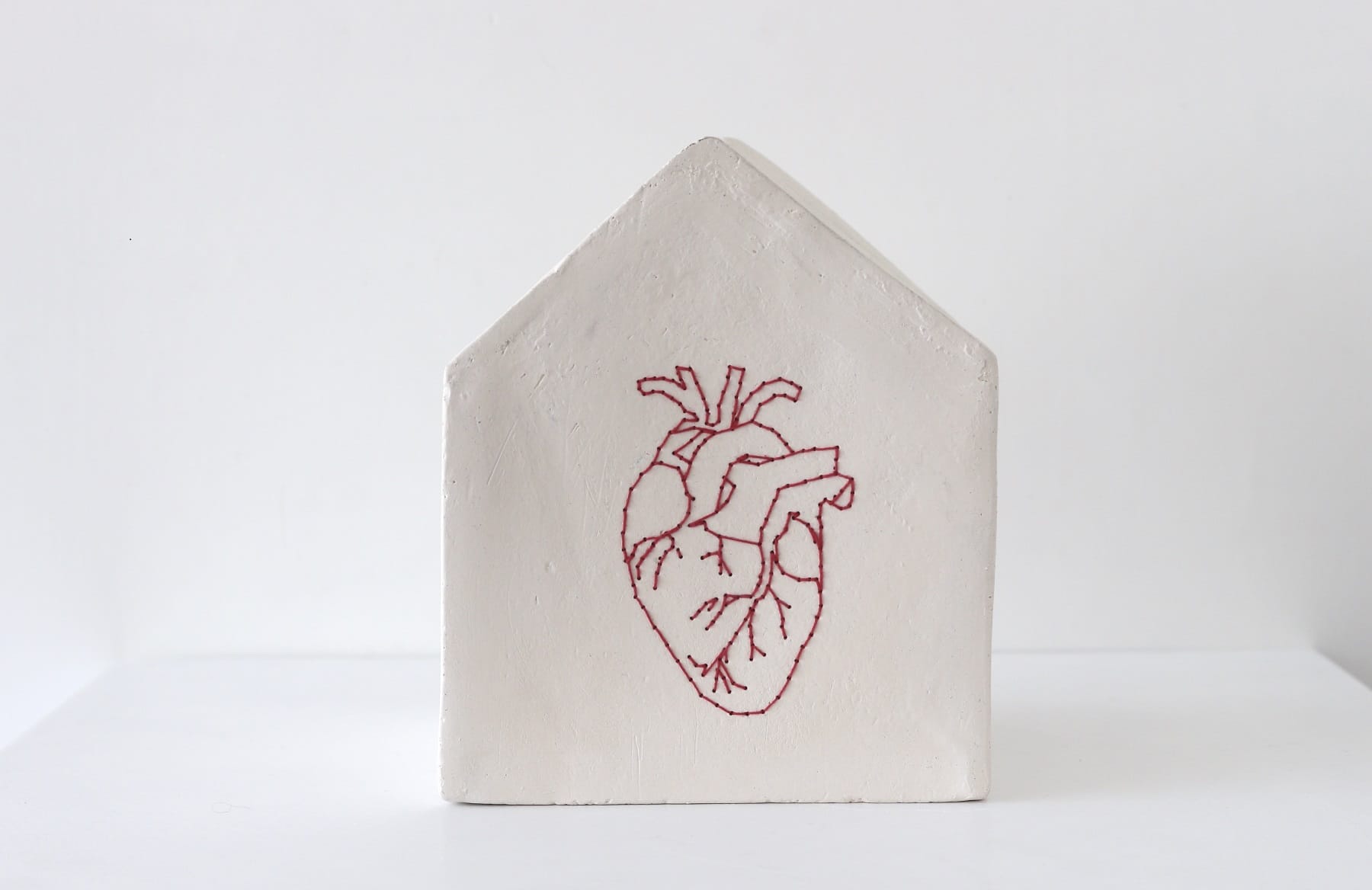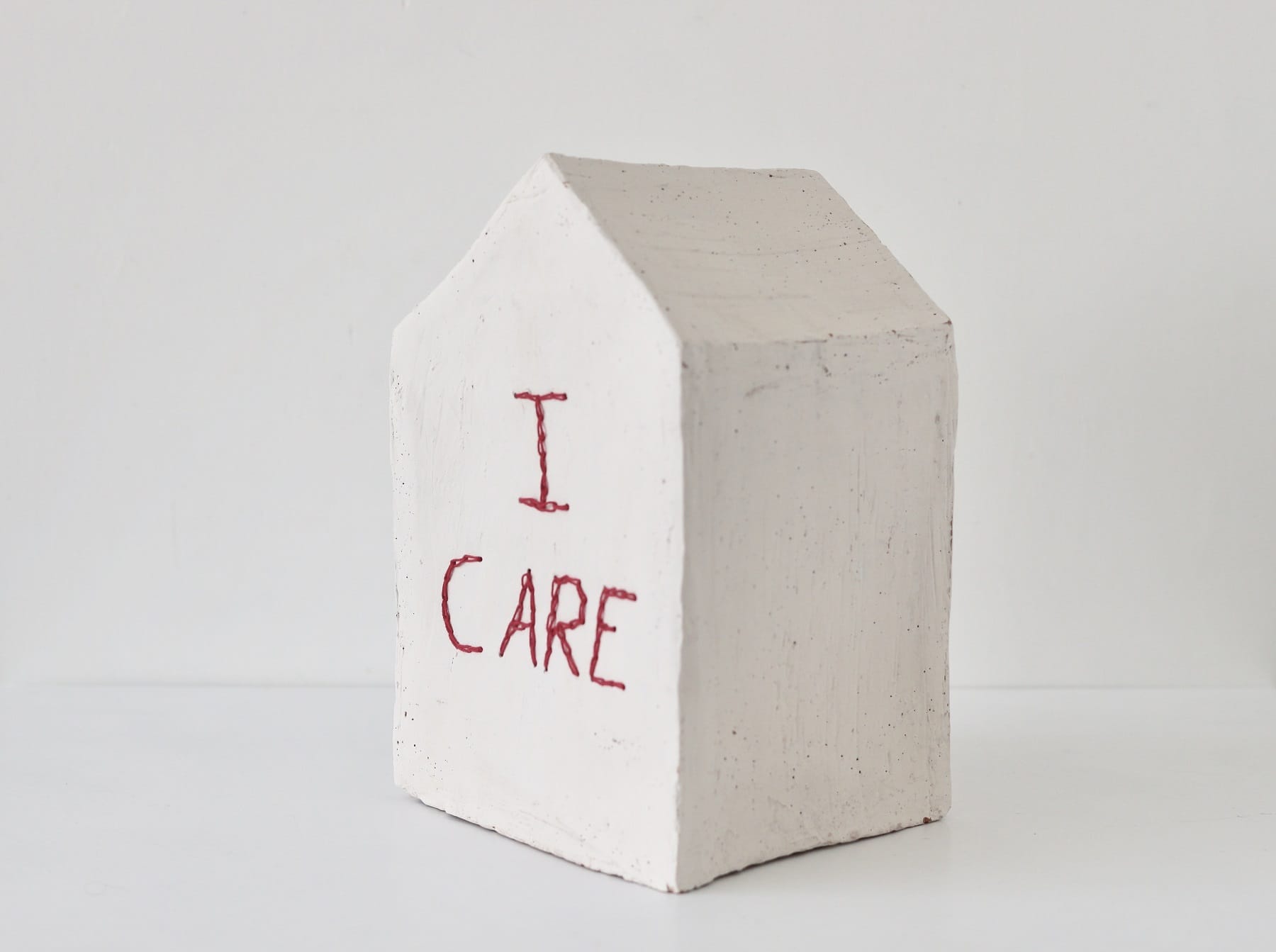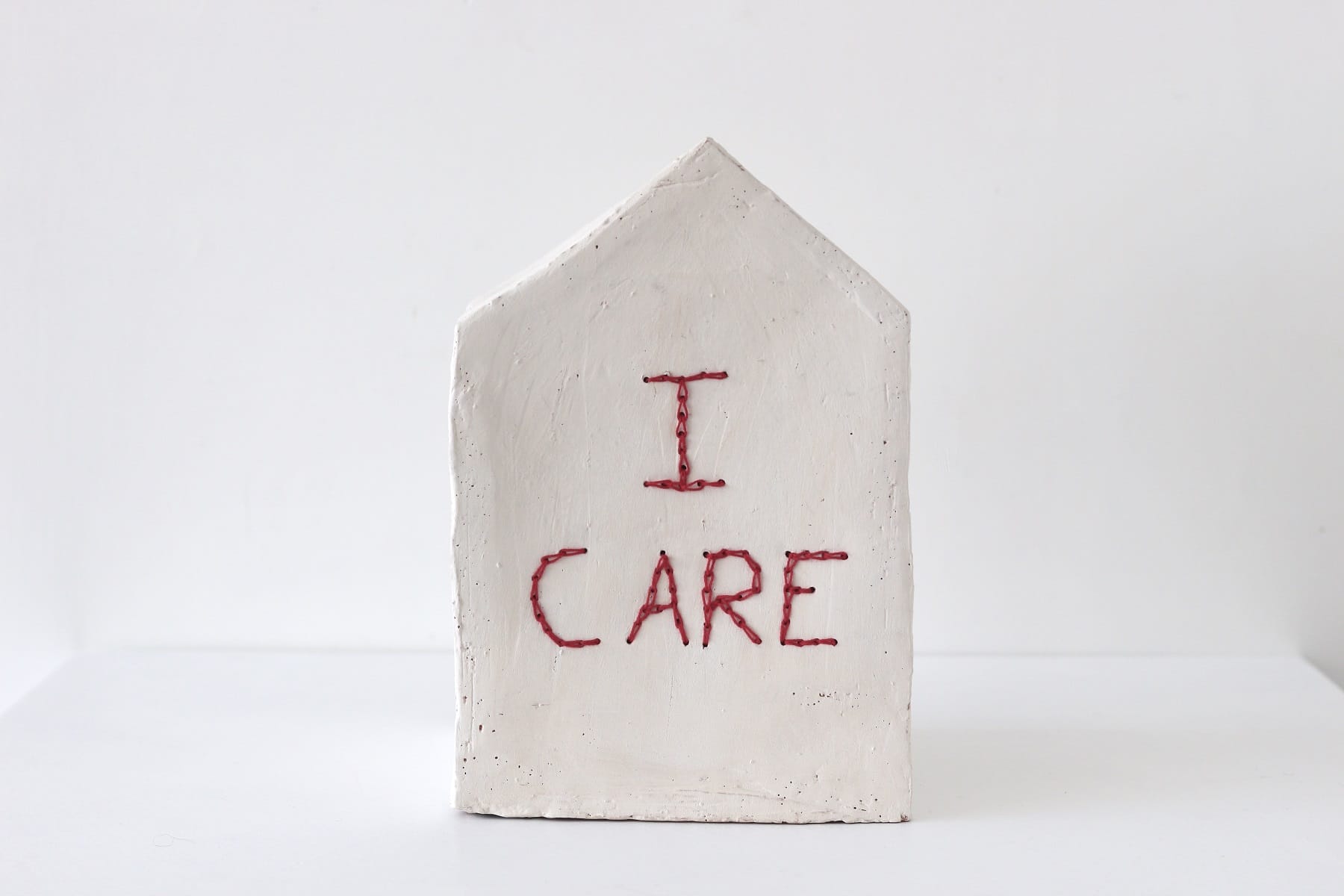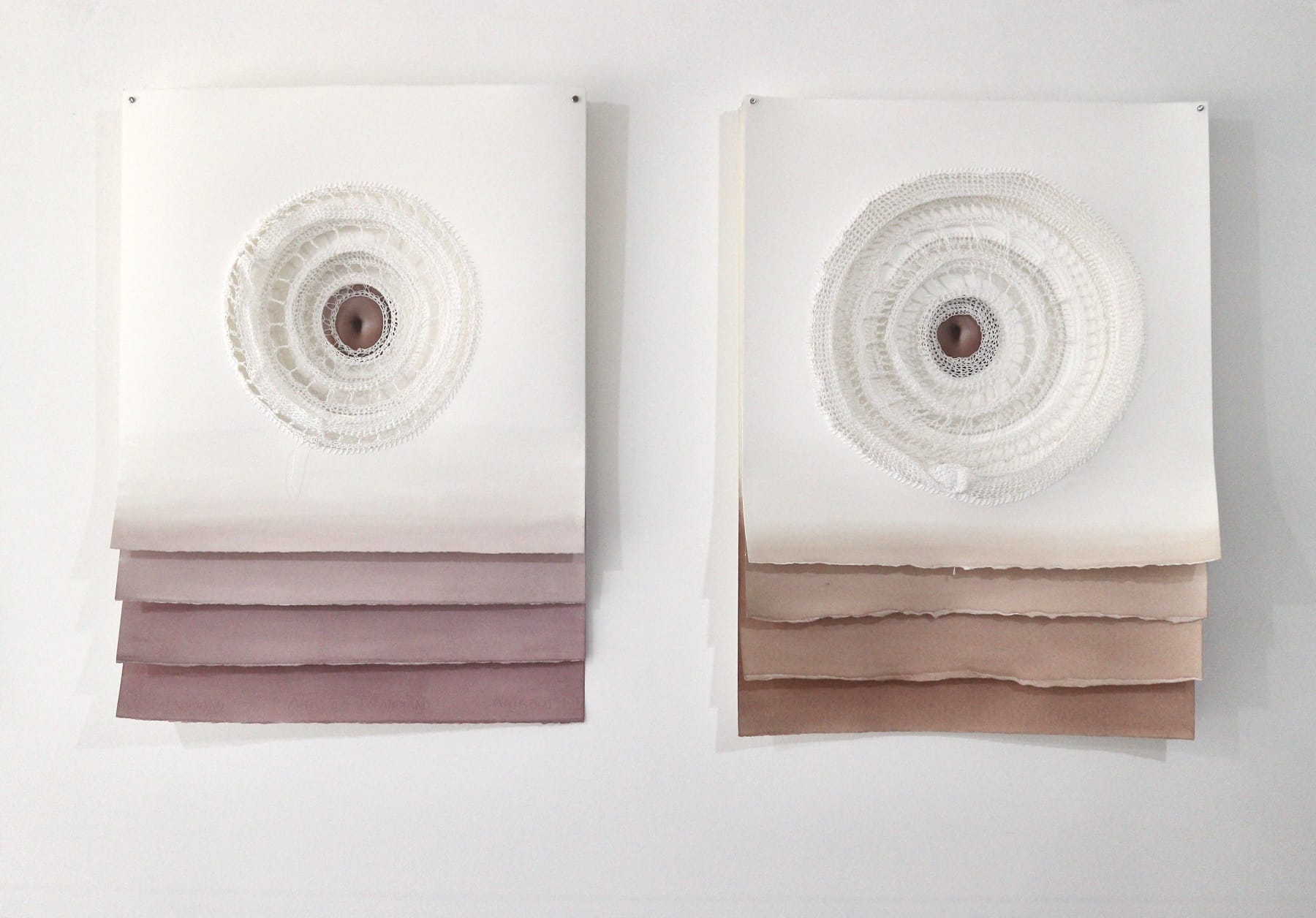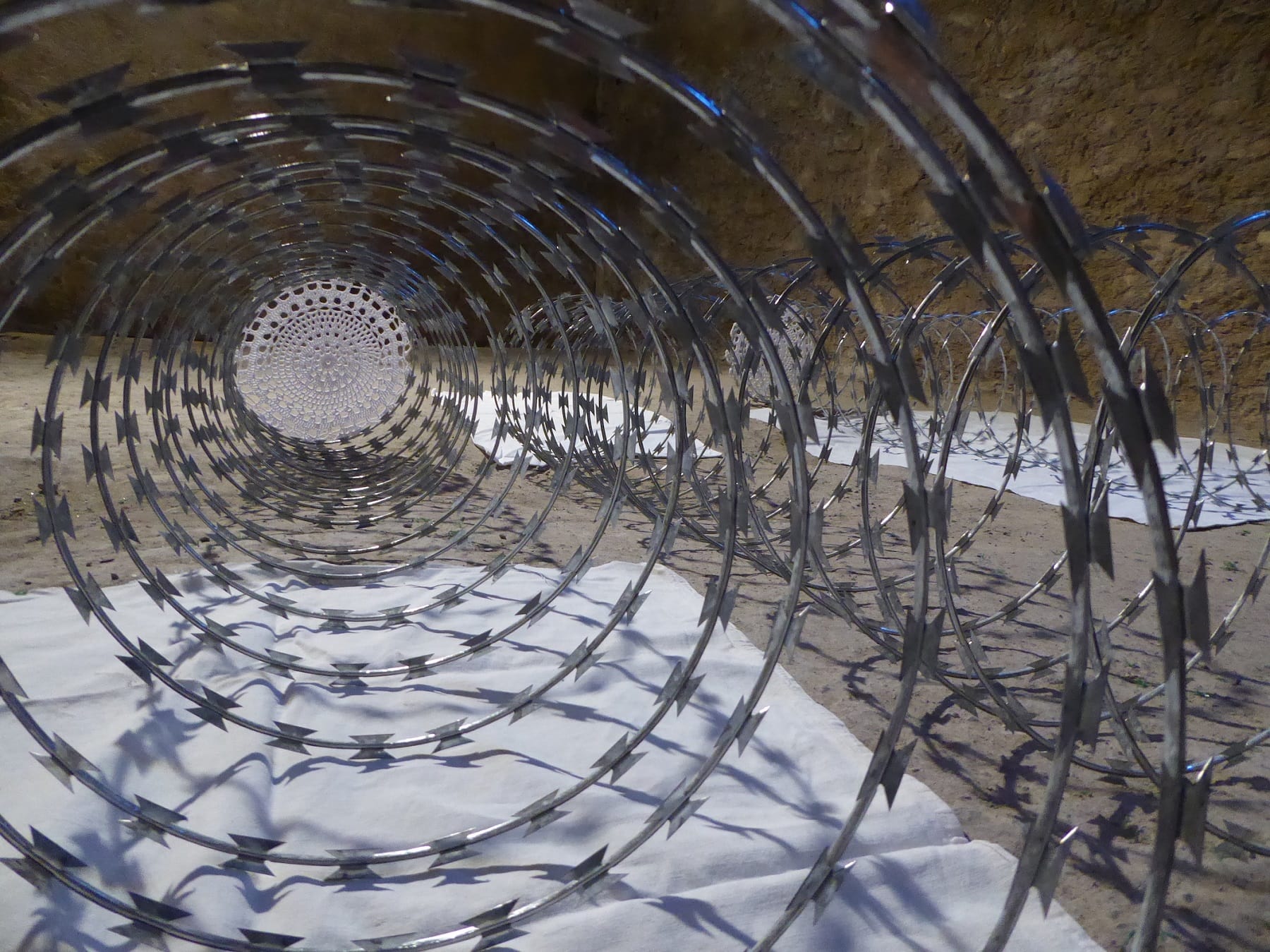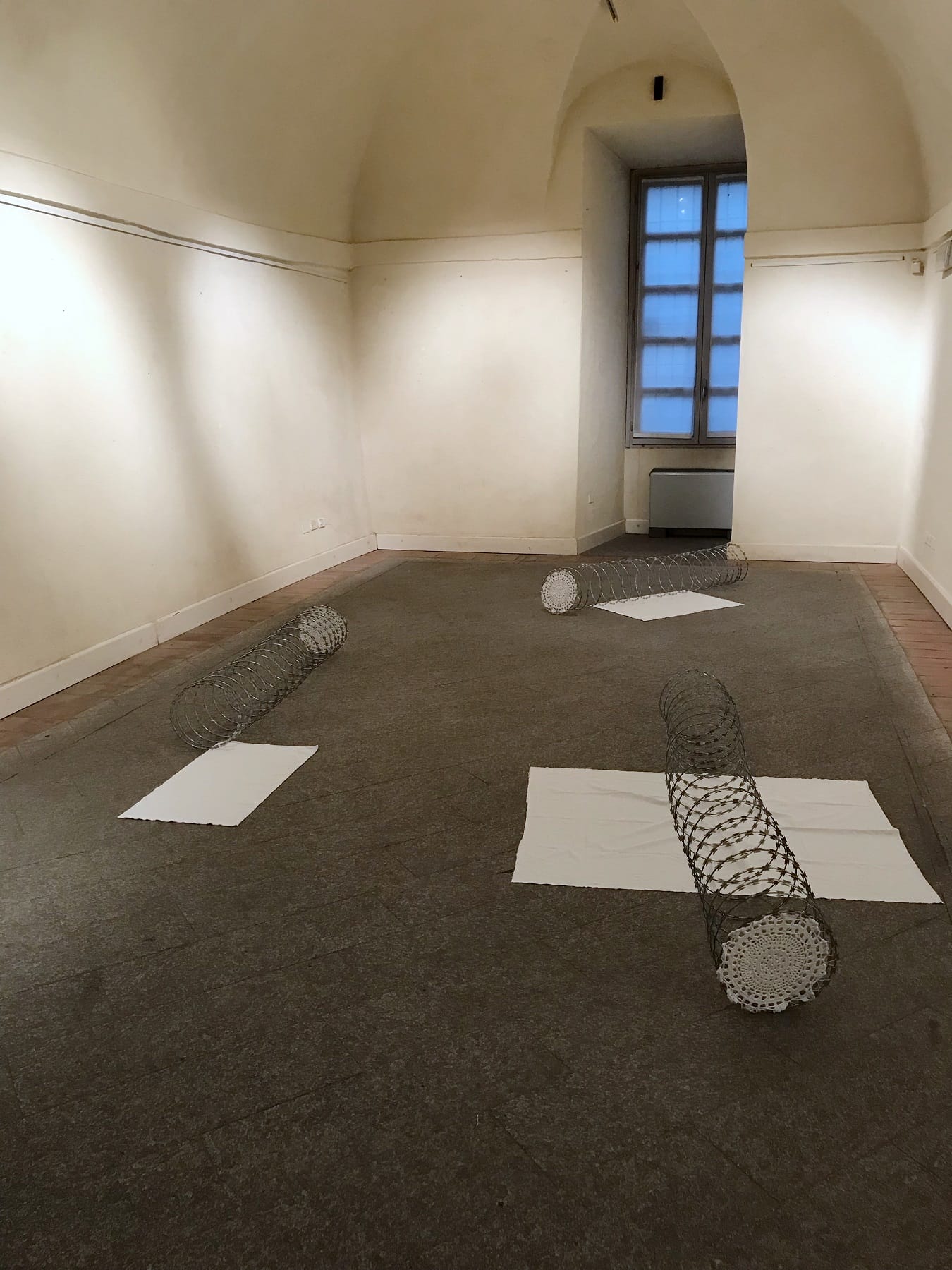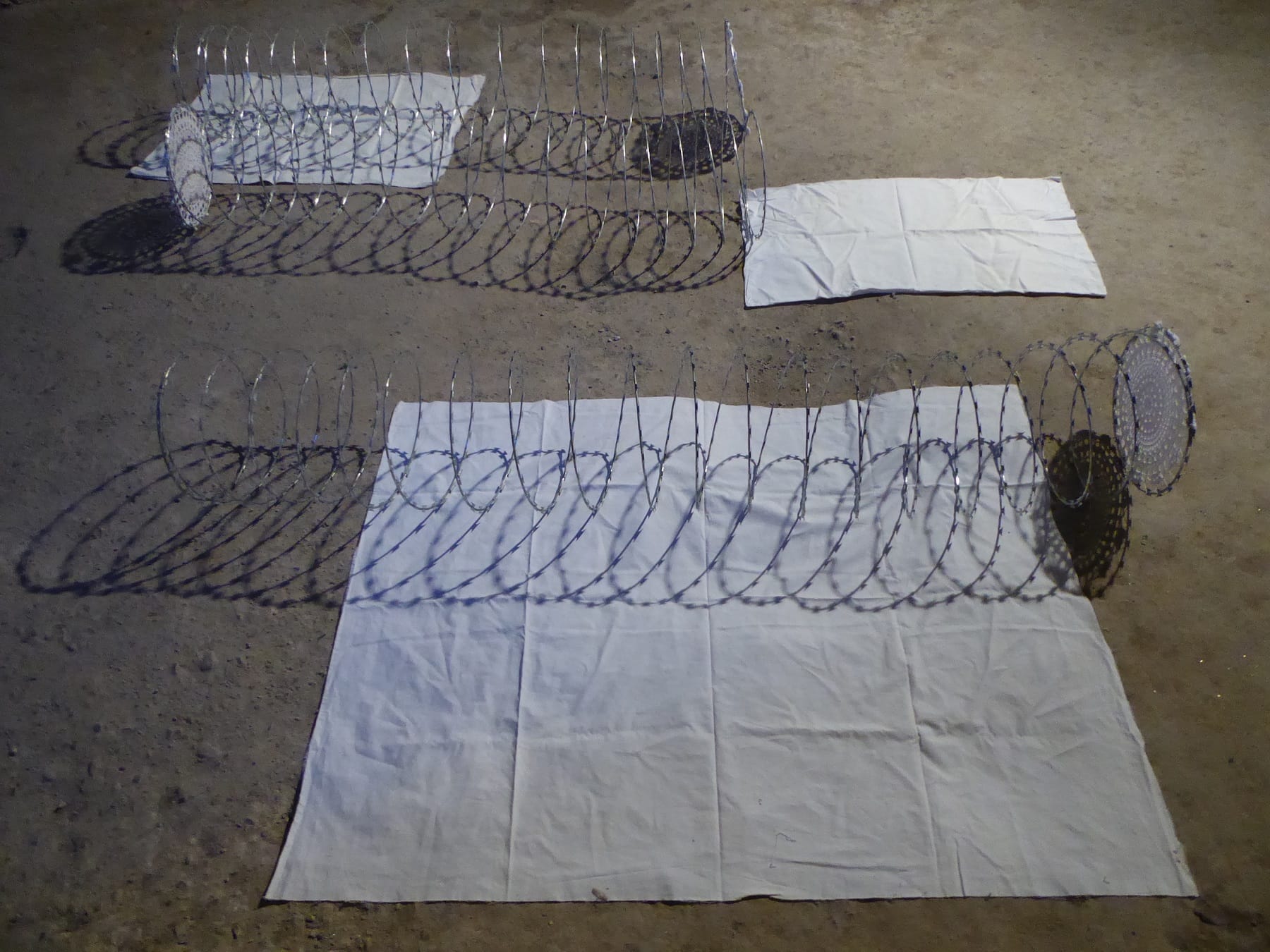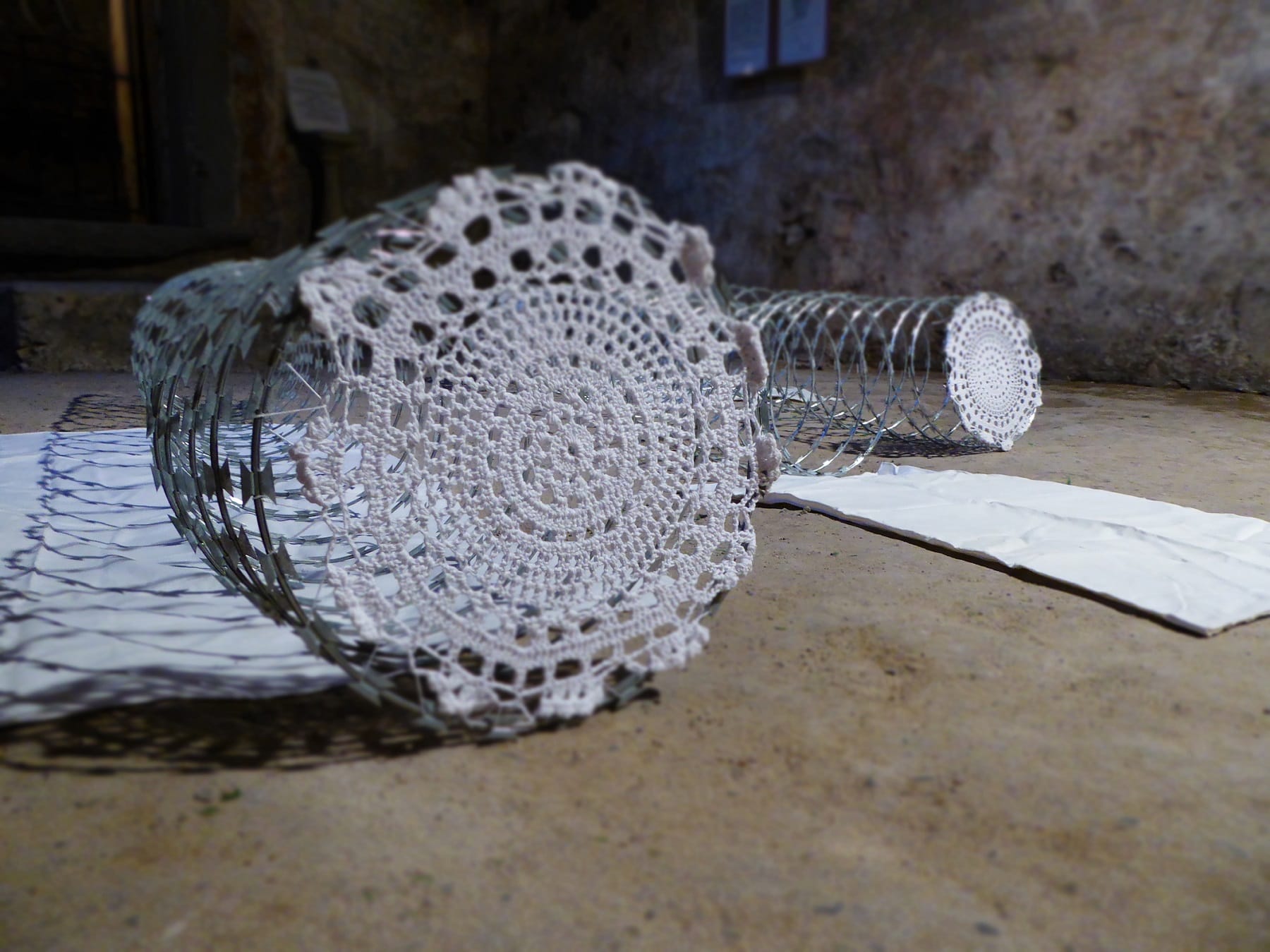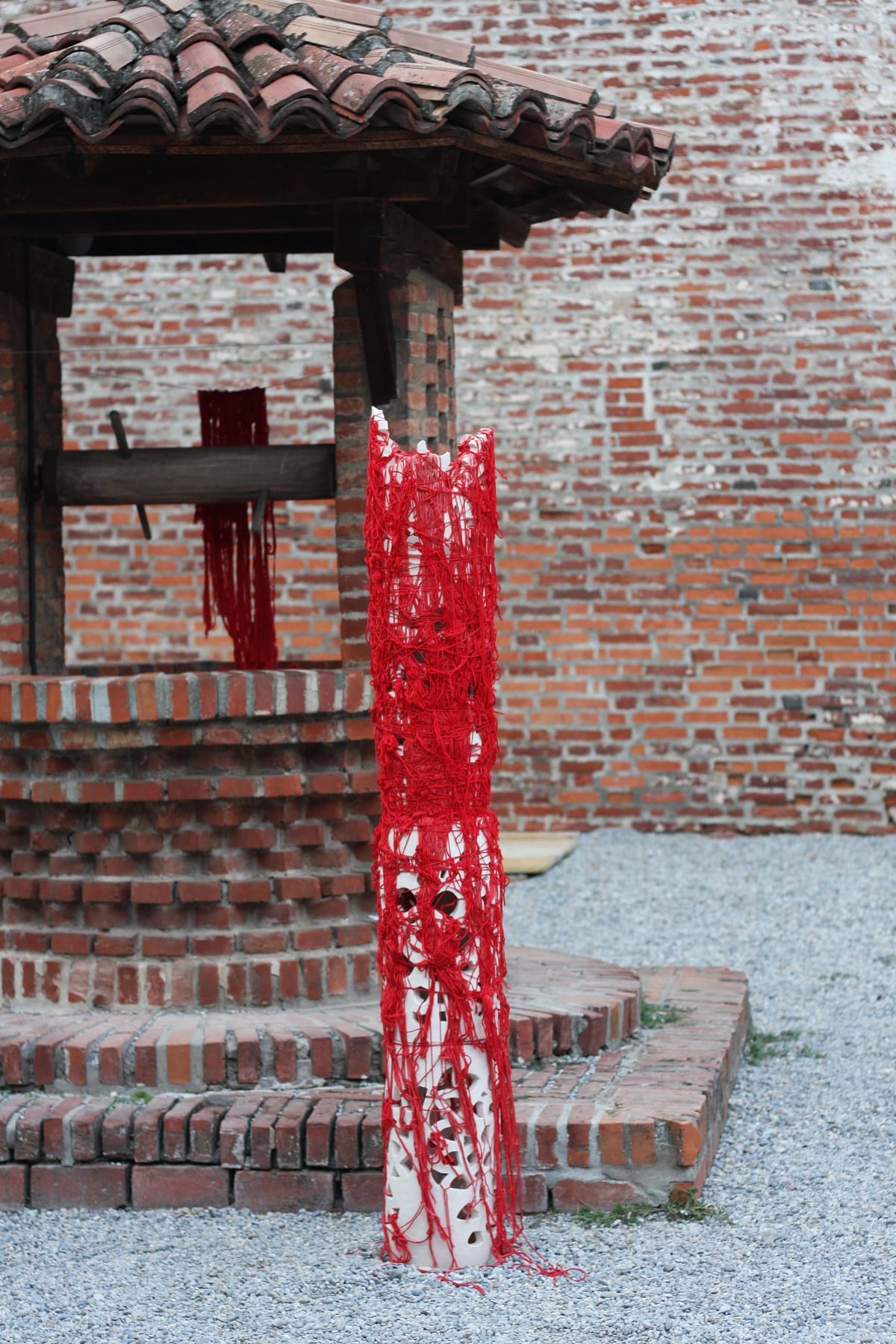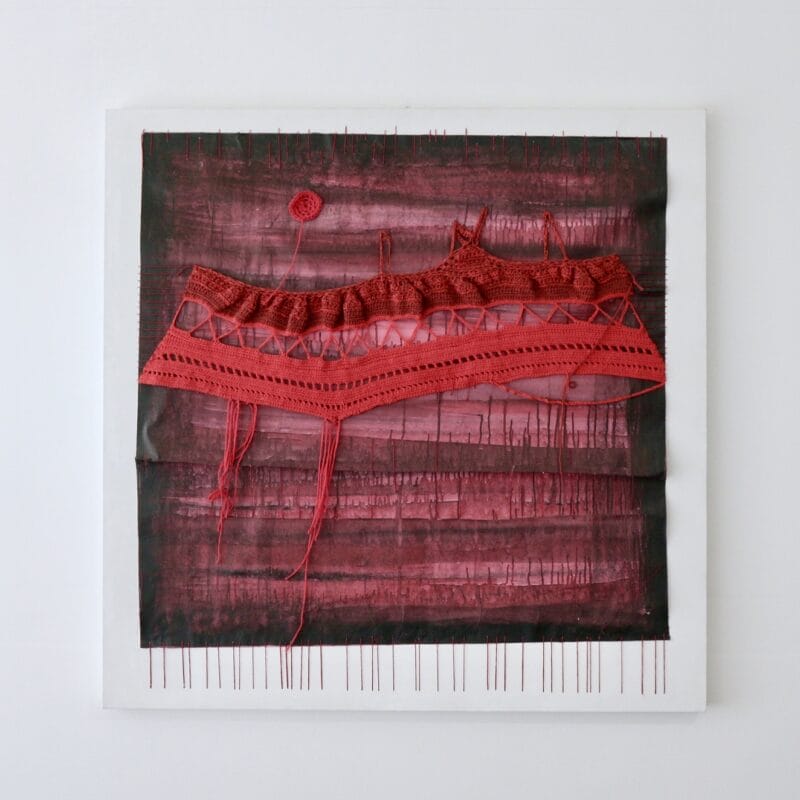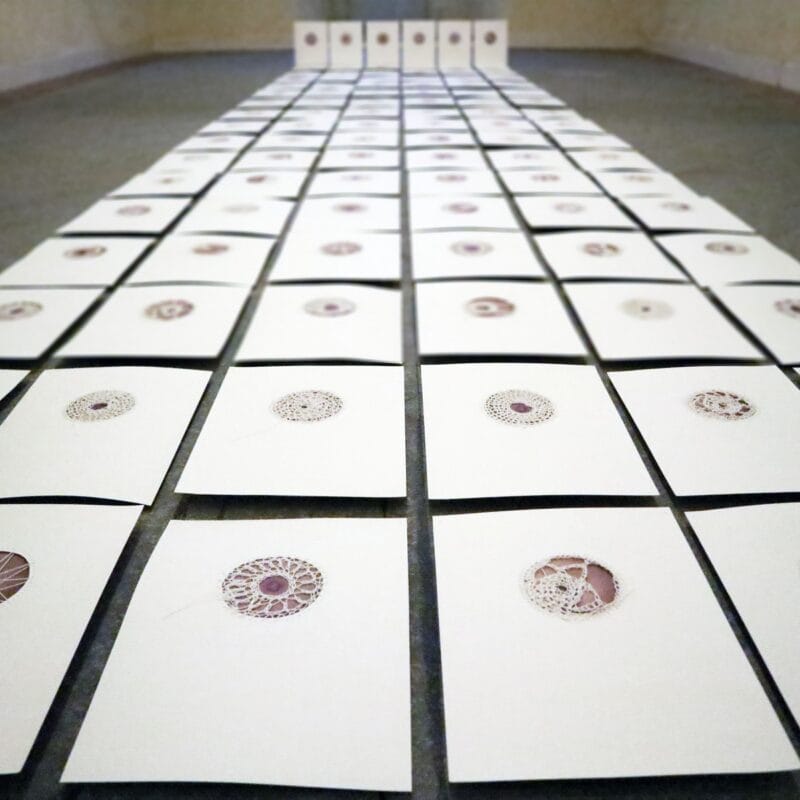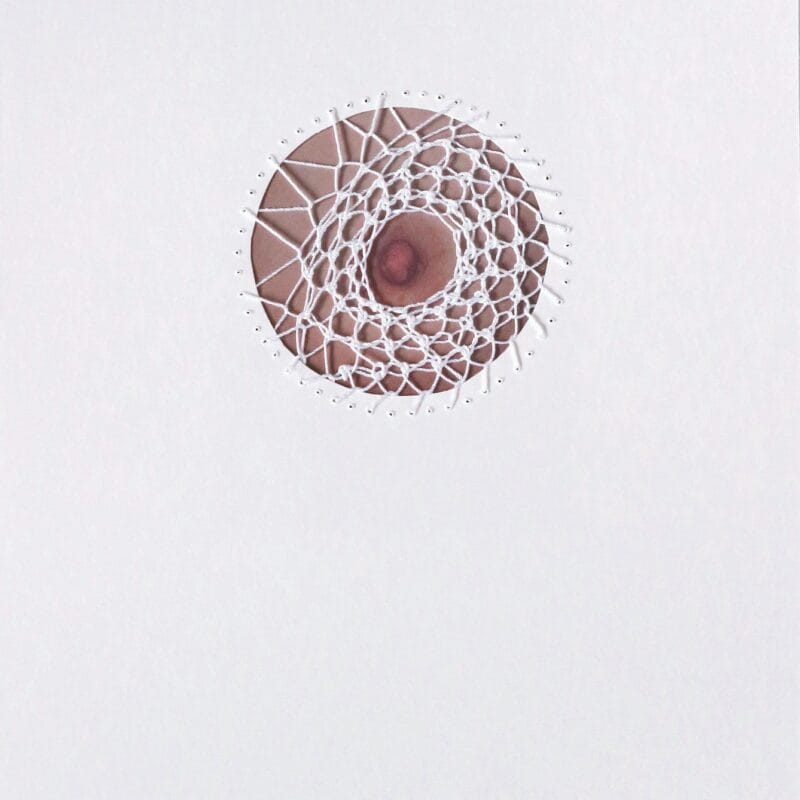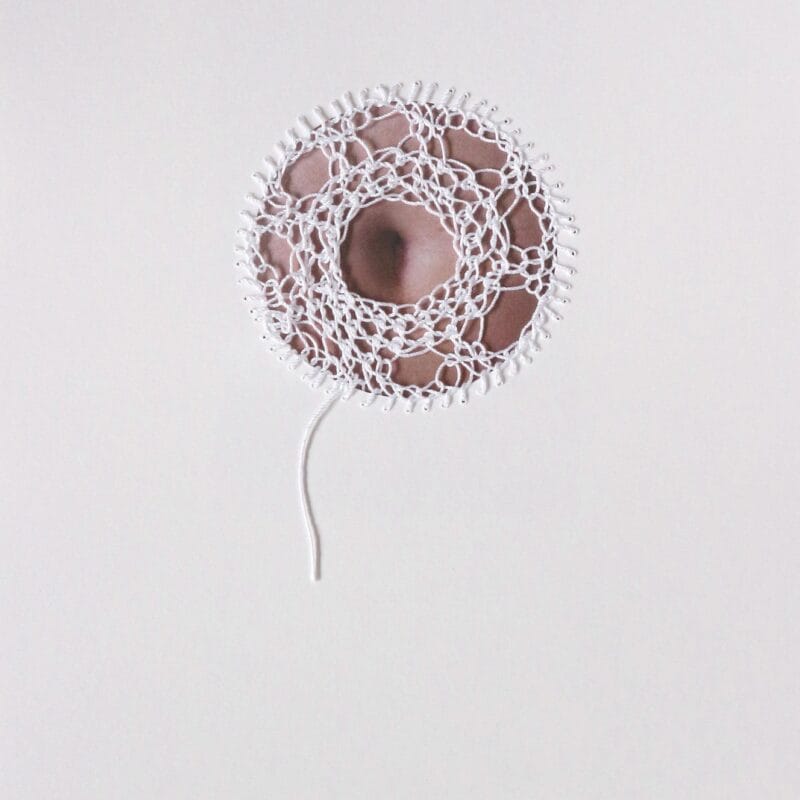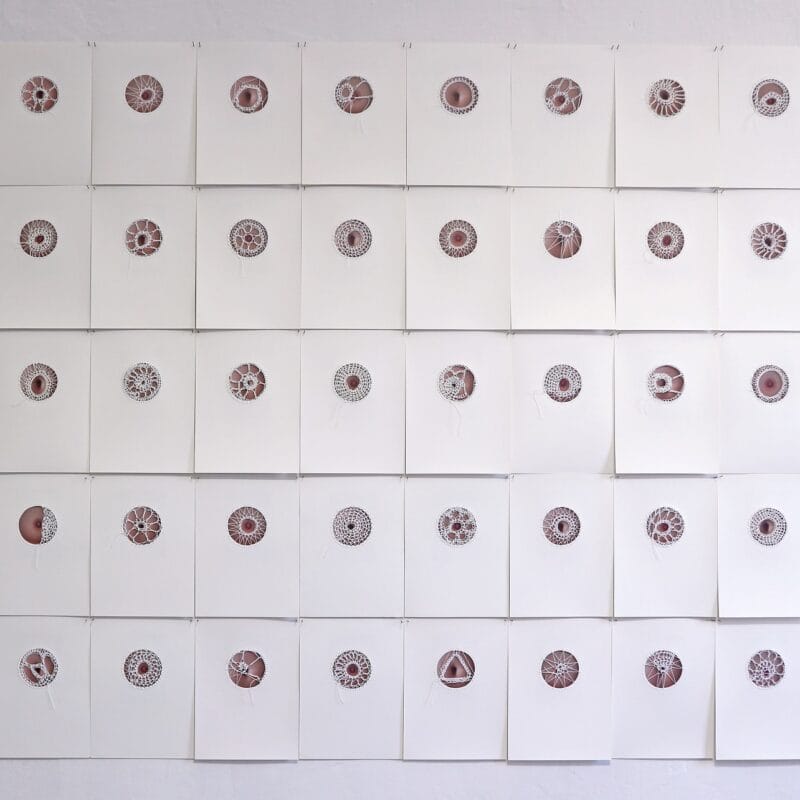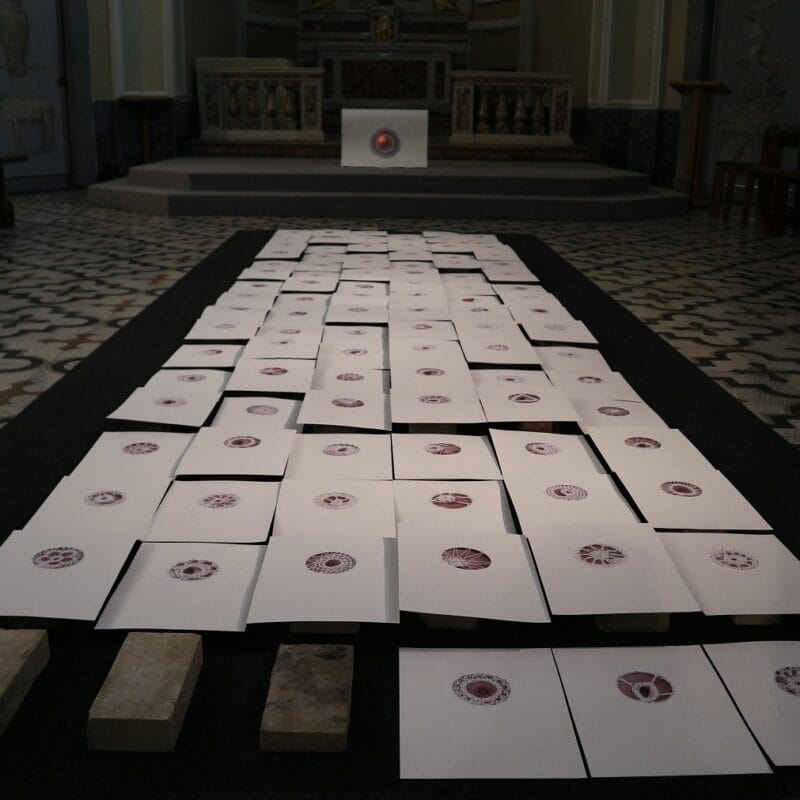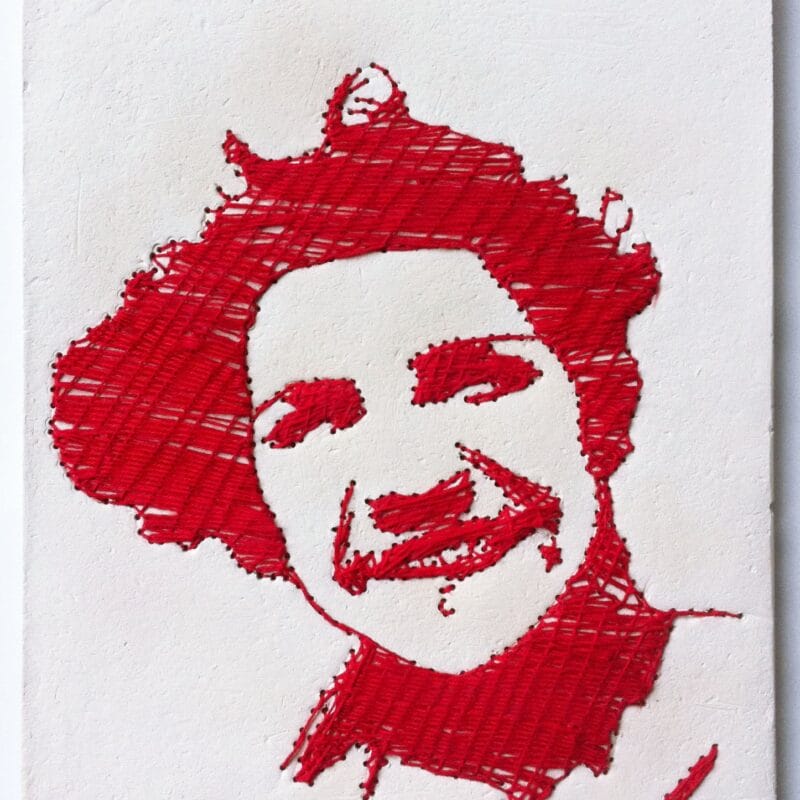Interview with Camilla Marinoni
Translation by Marina Dlacic

Camilla Marinoni, born in 1979, from Bergamo, graduated in Sculpture at the Brera Academy of Fine Arts in Milan and, subsequently, obtained a specialist diploma in Sacred Contemporary Art.
During her artistic career she participated in various training experiences including the Course of Excellence in Sculpture, Jewelery and Design at the TAM Center (Artistic Treatment of Metals) in Pietrarubbia ( Umbria), chaired by Arnaldo Pomodoro with the artistic direction of Nunzio; the lathe and glaze course for ceramic surfaces at the El Grao center in Valencia (Spain) with the artists Rafaela Pareja and Samuel Bayarri; the workshop of Practice and theory of performance art at the Factoria de arte y desarollo in Madrid with the performer artist Abel Azcona and, finally, in 2019 the “Free unicorn” workshop at the GAMeC of Bergamo with the artist and actress Chiara Bersani .
Winner of two prizes in 2018 at Paratissima Art Fair in Turin and awarded as many by Arteam Cup in 2019. Her permanent works are displayed in some churches in the provinces of Bergamo and Cuneo, in the Diocesan Museum of Modern Art Dedalo Montali in Rodello d’Alba and in the Giuseppe Gianetti Ceramics Museum in Saronno.
Your most recent project is “Embroider the void”. What is the ‘void’ and what is the relationship between this ‘void’ and the thread and embroidery?
The void is the form of absence, of what was, of what has been. Thread and embroidery are ways to hold that absence together, to retain it and make it visible.
Your research ranges between different techniques and materials and among these is the classic crochet doily; is it just a ‘medium’ or does its use also have other meanings?
The doily is gauze, care, home, time, patience. It is a delicate white capable of ferrying memories.
What are your sources of inspiration and what is the creative path that leads from the idea to the work?
I look at everything, I observe everything and then I let it settle inside me so that something else comes out.
Each work is born following its own path. Some works are born after many tests and attempts, others are images born in the mind and that I can immediately translate into sculptures, installations or performances.
You have always cultivated a very close direct relationship with the public, through your social profiles, newsletters, videos, live broadcasts. How important is this relationship for you and what role does it play in the creative process?
The audience are the people I talk to, I expose my doubts, I tell my doing.
Work, truthfully, comes from my need, a necessity, but if it is not shared it dies and the risk is that the purpose of making art is lost.
I deeply love the feedback from the public, even just commenting on a work. Sometimes thoughts come out that I would never have imagined and that open up new thoughts and ideas to work on, other times I feel that I have “hit the mark”, that I have reached right inside people and have managed to involve them.
“Alle ore 3” (At 3 o’clock) – Concertine, crochet cotton, cotton sheets – Ø 30×150 cm each – 2018 – Copyright Camilla Marinoni, courtesy Zerial Art Project
Pain, care, memory are among the recurring themes in your works. So, in your opinion, does art have a cathartic, ‘salvific’ power? And in this respect what is the value of the ‘sharing’ of the artistic experience – be it the use of an exhibition or participation in a workshop?
Yes, art for me is saving because it allows you to say unspeakable things and allows you to objectify what you feel and experience. In sharing there is deepening and the possibility of reaching a state of empathy.
From the performance on eating disorders to ‘Self-portrait’ how much autobiographical are your artistic projects and your works? And to what extent does it address the contemporary issues related to female and gender issues?
Everything is autobiographical and it is not. What I try to do is tell what I see and hear, elaborating it. Only this way people can step into the art work and find a connection point.
What are – if any – the artists and movements that have most influenced you or to which you feel your research is more related?
In 2007, during the TAM, the residential course in the Marche that lasted three months, we had Nunzio as artistic director who, seeing my path and my work, told me to look at Kiki Smith who I knew little but whose works I really appreciate today. In addition to her, I was already obsessed with other artists who are still my point of reference when I start a job:Marina Abramović, Gina Pane, who is probably the one I respect most of all, together with Louise Bourgeois. Then there are Annette Messager and Ana Mendieta; but many other artists have influenced me and still influence me: from Frida Kahlo to Anish Kapoor, from Sophie Calle to Jannis Kounellis, Anselm Kiefer and Joseph Beuys. I stop here because in any case at every show I take home something and every time I do research I come across artists that I don’t usually look for and then possibly “stay” close to me.
How have the effects of the pandemic affected your work over the past year?
This is a question that I still can’t answer. It was certainly a year in which I was able to work a lot, to make some good works and to create more contacts thanks to digital. The rest I will grasp when we are really out of it.
